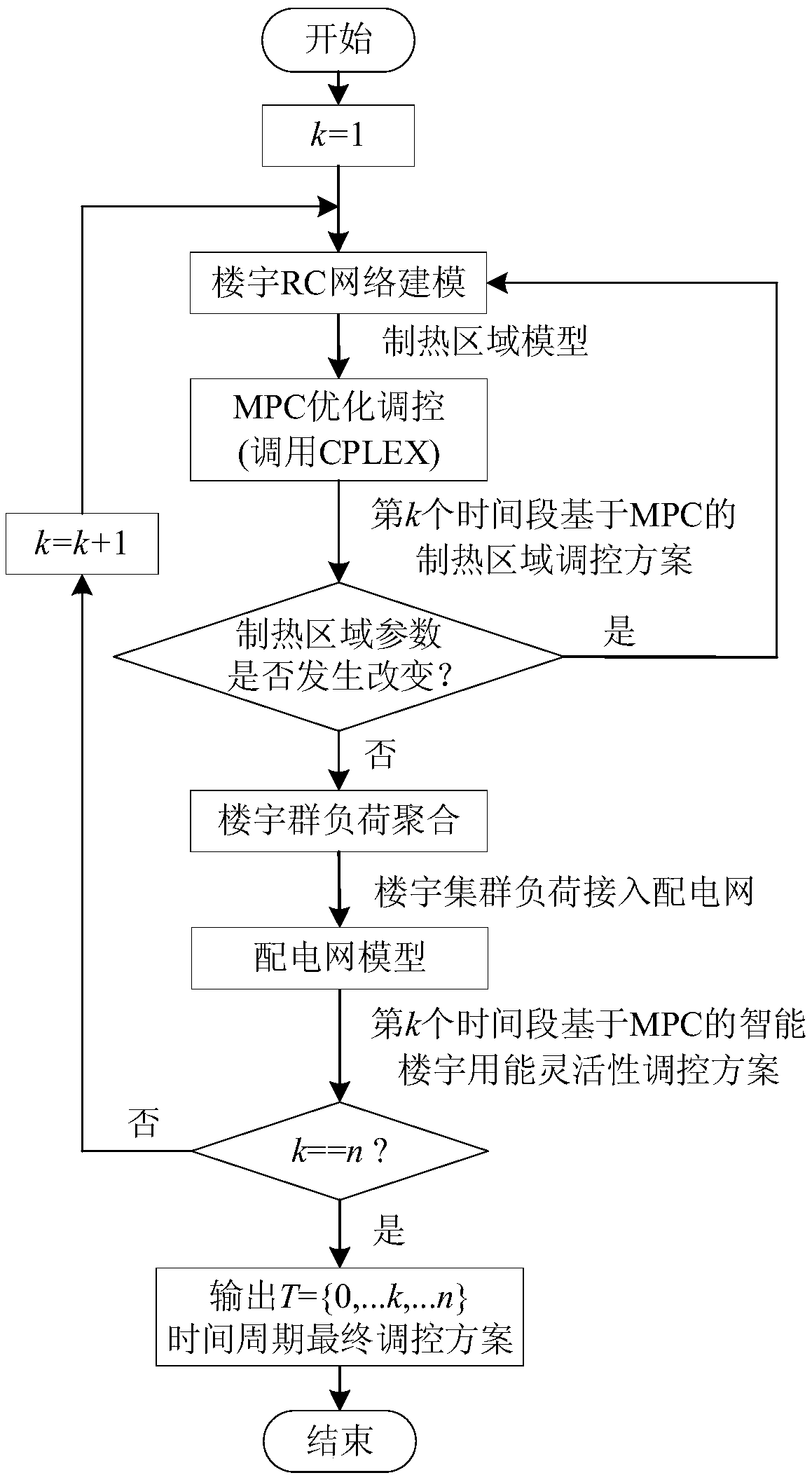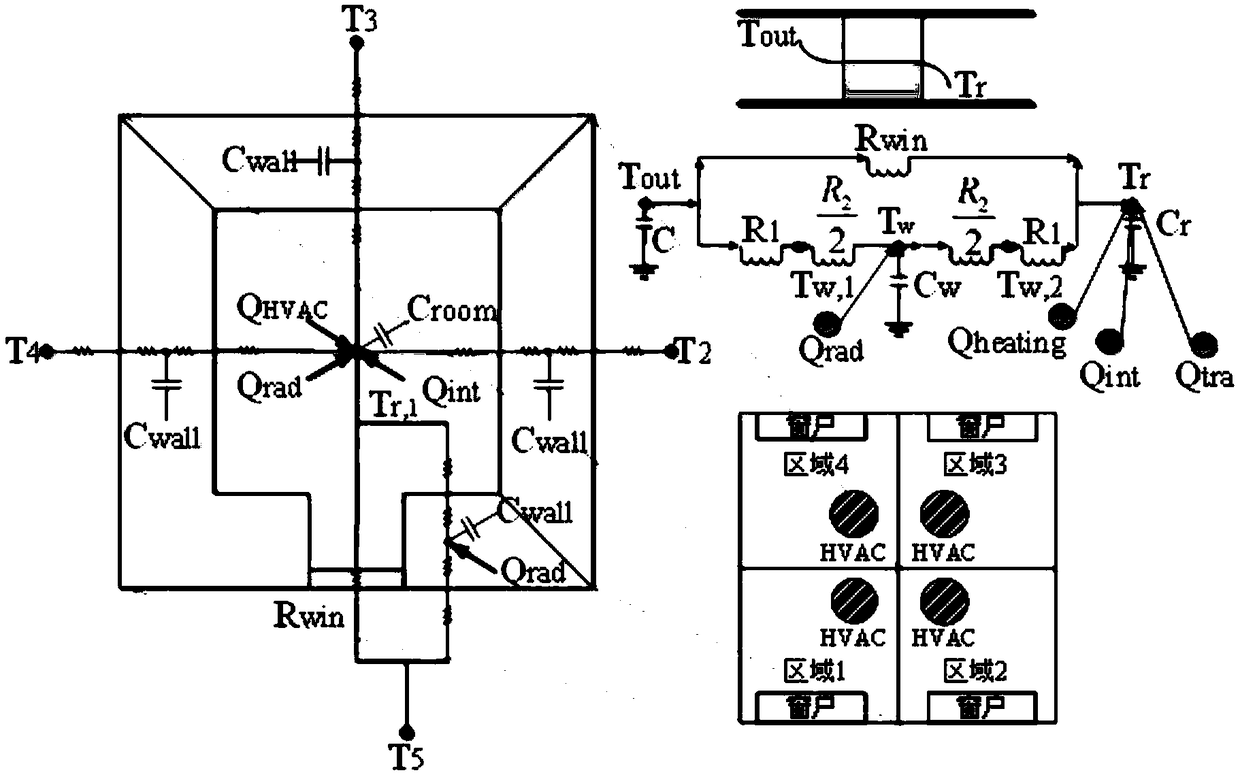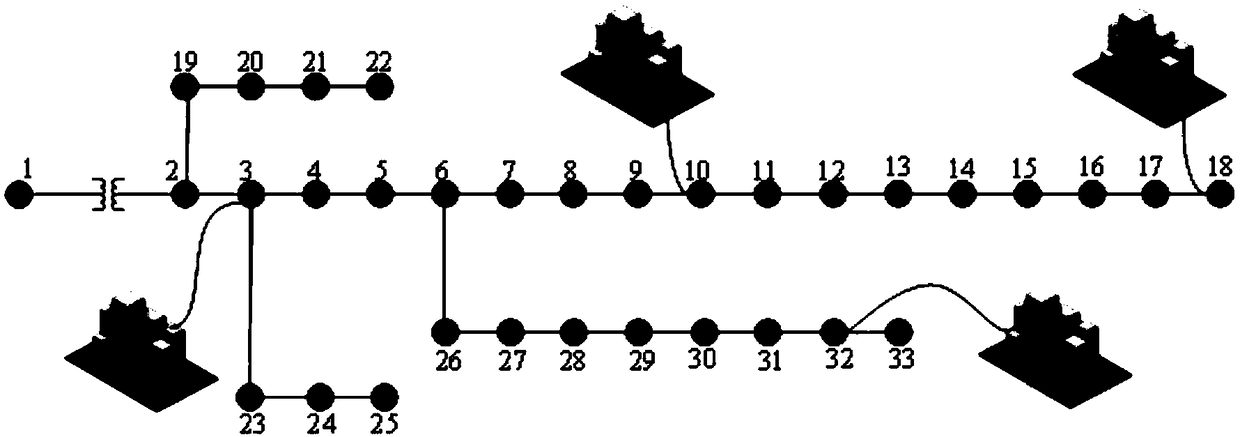Model predictive control-based energy consumption flexibility control method for intelligent building
A technology of model predictive control and flexibility, which is applied in the field of distribution network, can solve the problems of distribution network operation obstruction, the increase of accumulated error of forecast data, and the difficulty of optimizing dispatching results to meet the operation requirements of the system, so as to reduce operating costs and promote Reproducible, robust effects
- Summary
- Abstract
- Description
- Claims
- Application Information
AI Technical Summary
Problems solved by technology
Method used
Image
Examples
Embodiment 1
[0048] The embodiment of the present invention provides a method for flexible regulation and control of energy consumption in intelligent buildings based on model predictive control, such as Figure 1-Figure 3 As shown, the method includes the following steps:
[0049] 101: According to the heat storage characteristics of the building, construct an intelligent building energy consumption prediction model considering different heating areas inside the building, and integrate the building system into the distribution network as a flexible and controllable unit;
[0050]102: Based on the model predictive control method, the internal HVAC system of the building is used to optimize and adjust the room temperature within the temperature comfort range, so as to realize the flexible management of energy consumption of the building system and reduce the operating cost of the building;
[0051] 103: Taking the heating scene in winter as an example, the optimal scheduling analysis of bui...
Embodiment 2
[0054] The scheme in embodiment 1 is further introduced below in conjunction with specific calculation formulas and accompanying drawings, see the following description for details:
[0055] 201: According to the heat storage characteristics of the building, through the building RC (thermal resistance heat capacity) network, construct an intelligent building energy consumption prediction model considering different heating areas inside the building, and then carry out the next step of optimization based on the MPC strategy;
[0056] Wherein, the step 201 includes:
[0057] 1) In an uncertain environment, through the division of uncertainty levels [3] , to obtain basic data, including: building parameter information, HVAC system parameters, light intensity, outdoor temperature, and real-time electricity price [4] ;
[0058] The division of the uncertainty level and the steps of obtaining the basic data are well known to those skilled in the art, and will not be described in d...
Embodiment 3
[0103] The following combined with specific examples, Figure 4 , Figure 5 , Figure 6 And table 1, table 2 carry out feasibility verification to the scheme in embodiment 1 and 2, see the following description for details:
[0104] This example takes a typical day in winter in northern my country as an example to verify the effectiveness of this method. The energy consumption prediction model of a single heating area in an intelligent building and the schematic diagram of the distribution network of an integrated intelligent building are as follows figure 2 , image 3 shown.
[0105] For a typical residential building, the comfortable temperature range set by the user is 22°C to 24°C. Considering a day's rolling optimization regulation, a time section is taken every 15 minutes, and the prediction time domain and control time domain are selected for 4 hours. The embodiment of the present invention takes a single-family five-story residential building as an example. Each f...
PUM
 Login to View More
Login to View More Abstract
Description
Claims
Application Information
 Login to View More
Login to View More - R&D
- Intellectual Property
- Life Sciences
- Materials
- Tech Scout
- Unparalleled Data Quality
- Higher Quality Content
- 60% Fewer Hallucinations
Browse by: Latest US Patents, China's latest patents, Technical Efficacy Thesaurus, Application Domain, Technology Topic, Popular Technical Reports.
© 2025 PatSnap. All rights reserved.Legal|Privacy policy|Modern Slavery Act Transparency Statement|Sitemap|About US| Contact US: help@patsnap.com



